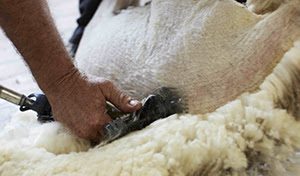
SCAA members are considering a shearing rate increase.
PEAK wool grower body, WoolProducers Australia, has assured its members there has been no official increase in the award for shearers and shed hands, despite an increased pay rate proposal put before contractors.
WoolProducers said the Shearing Contractors Association of Australia (SCAA) has put a non-binding recommendation to its members of a 15 percent increase in the pay rate for a 60-day period.
Sheep Central was told last month that shearing contractors were being surveyed about setting viable above-award rates for their experienced shearers and shedhands as the Australian Workers Union also called for a lift in shearer pays.
Due to COVID-19 New Zealand worker and interstate travel restrictions, Australian shearers are being lured from contractor teams with offers of up to $6-$7-plus cash to shear sheep, with “tucker thrown in”. The pay offers have sometimes been more than double the national pastoral award rate of around $3.25/sheep and contrast to a contractor’s rate to producers, including payment of shed hands, classer, and cook, WorkCover, insurance and GST, of close to $9 per sheep.
Shearing Contractors of Association of Australia secretary Jason Letchford told Sheep Central last month the SCAA is circulating a survey about setting a recommended “viable” above-award rate for experienced employees of association members.
“It would be a recommendation and certainly not a legally binding agreement like an enterprise bargaining agreement or similar, but would be above the award.”
WoolProducers chief executive officer Jo Hall said as has been widely reported, parts of Australia are experiencing a significant shortage in shearers at the moment, which in turn has seen above award rates being paid to secure shearers.
The Fair Work Commission is the relevant body responsible for changes to any award and has a standard process which must be followed to apply for changes, WPA said.
“The current situation of wool growers having to pay above award rates is a completely commercial arrangement between the wool grower and shearers or shearing contractors but there is no legal obligation for growers to be paying above the award,” Ms Hall said.
“However, unfortunately for growers there are simply not enough shearers to do the job at this point in time and as with any supply and demand situation, the market must pay what is required to get the job done,” she said.
WoolProducers said it was co-ordinating efforts with relevant industry stakeholders at a national level and has been working constructively with the SCAA, Western Australian Shearing Industry Association, National Farmers Federation, Australian Wool Innovation and shearer trainers to work on medium- and longer-term strategies to address attraction and retention issues in the wool harvesting sector.

The current shearing situation is not unlike the situation in the early 1970s. At that time I was chairman of The Victorian Farmers Union Industrial Association. From that experience may I suggest that paying over award payments is a recipe for disaster. It create enormous friction and animosity.
There are two remedies I would suggest:
1. An immediate appeal by the industry (employers and union) to Fair work Australia for an increase in the Pastoral Award for shearers. I would suggest the industry can afford something like 15 percent increase payable immediately.
2. A determined effort at recruitment and a training of new shearing entrants to the industry.
An additional increase to the award will help recruitment, but good training opportunities are essential
You are living in the 1970s when there were lots of shearers and sheep with an average weight of 40kg. If you think it’s too much money then tell all your mates to shear their own sheep.
So are the contractors just wanting to put their rates up? The old rule of thumb was two and a half times the shearing rate for contract price. My son did four and a half days last week and made $4500. I don’t think he needs another $700. I don’t think too many 22 year-olds can make that sort of money in a short week. In the winter he was up in the Riverina slogging it out doing 40 a run making half that. So I think those sheep should be a higher rate. They are not good shearing crossbred lambs.
Tom Casey, keep at it, you are making a lot of sense. The cost of shearing a sheep has to be linked to the weight of that sheep and the difficulty/time it takes to shear that sheep. Times have changed, six monthly shearing, sheep are to big and heavy in a lot of instances. The contractor needs to call it. A base rate, then add on for difficulty and size.
Why breed a shearer’s nightmare. Breed sheep with ease of shearing in mind — if there is such a thing — unless you want to scare people away from the industry. You would be stupid not to.